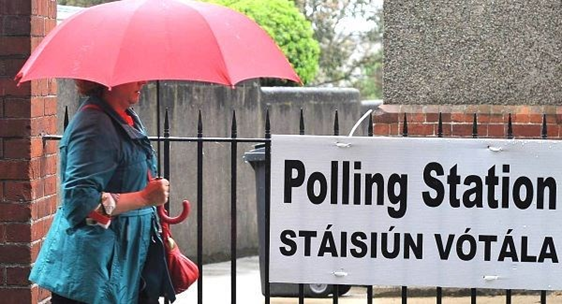Electoral politics isn’t quite as exciting as topflight football, but to some of us political boffins, the Electoral Commission’s recent announcement is the biggest news since Donald J. Trump entered the White House.
As per Article 16 of Bunreacht na hÉireann (the Constitution), it is necessary for the Dáil to have one TD for every 30,000 citizens, and for the boundaries be reviewed at least once every twelve years. Following on from Census 2022, the Electoral Commission was tasked with exactly that – a review of our electoral boundaries to ensure compliance with the constitution.
The conclusion to this review is somewhat surprising. With a recent surge in population growth, Ireland now exceeds its constitutionally allowable number of TDs per population however, the Electoral Commission has recommended an additional 14 seats be added to the Dáil at the next election. This will bring the total number of TDs to 174, the highest number ever in the state’s history.

Rule by the polls
So why does this matter? Well, essentially politics is a numbers game. To form and sustain a functioning government, you will now need a minimum of 87 of TDs’ votes. Arriving at that magic number is the new benchmark.
The stakes are high. The ancient Greek philosopher Aristotle once said, “From these things it is evident, (that the city belongs among the things that exist by nature), and that man is by nature a political animal.” This still holds true.
With an increasing cohort of TDs, we may see a dilution of the voice of individual TDs, but no major re-balance of power between the Dáil and the executive that is government. The executive still holds the keys to the kingdom. But a growing number of Parliamentary colleagues means Dáil members will retain their importance as sounding boards for ideas and as constituency representatives who government will need to keep happy.
Despite speculation as to the prospect of larger, six seat constituencies, the Commission’s conclusions mean that how we elect our constituency representatives will not alter radically. The Commission’s terms of reference were such that it was always working within the parameters set for it.
We will still have three, four, and five seat constituencies spread mostly along county boundaries though, as initial reaction shows, people in counties like Kilkenny, Donegal and Wexford among others may not see it that way.
There will be 13 three-seat constituencies (up four from the last election), 15 four-seat and 15 five-seat constituencies.

Run the numbers
Armed with the Commission’s report, the political number crunchers will now turn their attention to is what this means in terms of reaching the holy grail of ‘a quota’–the number of votes needed, be it on the first count or the last, to be elected. There will do so with the latest opinion polls front of mind.
For a three-seat constituency, 25% of the vote is generally the quota benchmark, 20% in a four-seater and 17% in a five-seater. If we look at what political opinions polls are indicating, this is where is really starts to get interesting. As our US friends would say, ‘do the math’.
With Sinn Féin steadily in the low to mid-thirties, maintain these numbers in an election and they are set-fair to succeed no matter what the constituency seat number.
Fianna Fáil and Fine Gael are ranging from low twenties to high teens. If these levels of support transpire on election day, then Fianna Fáil and Fine Gael will have a real fight on their hands to elect more than one candidate in many constituencies.
This will have a massive influence on candidate selection, constituency carve-ups between candidates from the same parties, and make the much lauded but exceptionally difficult vote management strategies more difficult than ever.
The number of candidates you run in a constituency is key. Too many, and you essentially cannibalise your vote. Too few and—as Sinn Féin experienced in 2020—you fail to capitalise on your popularity.
For those polling below 17%, five seat constituencies are key. These will be important battle grounds for independents with strong local resonance, to fringe candidates, to a Party which captures momentum in the campaign, just as the Green Party did in 2020.
Just as the electoral review triggers change, retirements and the broader political winds indicate that we can expect further new faces in the next Dáil. Who will fill the new ranks?
We know that 82% of new TDs come from a political background, either having been a Senator (the lower chamber of the Oireachtas) or a Councillor with a local authority. Therefore, keep your eyes on active Councillors and Senators in the expanding Dáil constituencies.

The shifting backdrop
Voting trends have changed in the intervening years since the descent into recession from 2008-2014. Irish voters have increasingly sought left wing policies and parties to represent them in the Oireachtas.
In General Election 2020 the #VoteLeftTransferLeft movement gained significant traction across social media platforms such as X (formerly known as Twitter), bringing with it a further surge in left leaning candidates and parties, most notably Sinn Féin but also the Social Democrats and People Before Profit (PBP).
All of which brings us back to the magic number of 87 required to form a government. Since the late 1980s, Ireland has moved away from single party majority governments to the European coalition model. We have also seen that slim majorities can make governing close to impossible.
It wasn’t by accident that former Taoiseach Bertie Ahern liked to have comfort in numbers when it came to government formation, anticipating the inevitability of people going overboard during an administration’s lifetime. Ahern also maximised the art of diffusing his political opponents by both binging other Parties into coalition governments and securing Independent TD votes from the backbenches.
As the last three election results have shown, how we vote and who we vote for is changing. Political brand loyalty is no longer ‘sticky’. The days of the so-called ‘big two’ of Fianna Fáil and Fine Gael are over. Furthermore, in consistent elections now the electorate has been moving to the left.
This evolving landscape means who we interact with politically and how we do so will keep changing. With the new electoral boundaries now confirmed, from this week every existing and prospective TD will move further into election mode. While they may never openly admit it, what matters to them will increasingly be viewed through the prism of what matters to voters, their employers.
As the starting line for the next election gets closer, the efforts of those seeking to shape political decision-making will further intensify. Getting your voice heard just got that little bit harder so knowing what to do and how to do it becomes more relevant now.

Macdara Ó Móráin is an Account Supervisor with 360, a FINN Partners Company and a former political staffer.
